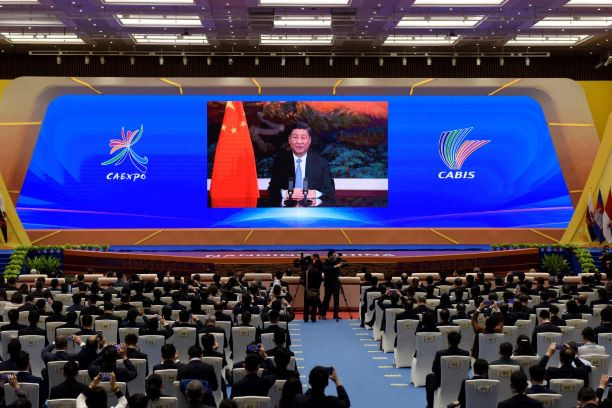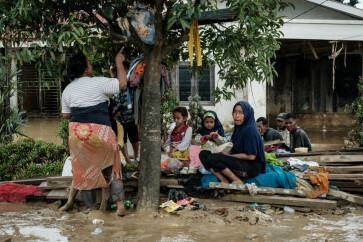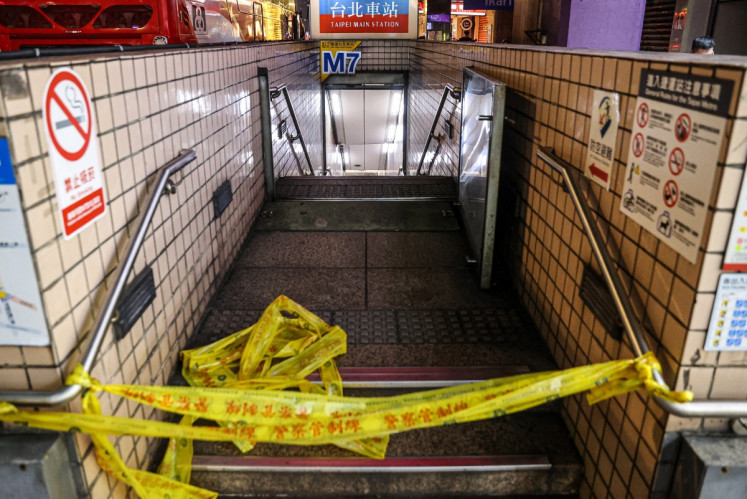Popular Reads
Top Results
Can't find what you're looking for?
View all search resultsPopular Reads
Top Results
Can't find what you're looking for?
View all search resultsXi to visit Southeast Asia as ASEAN seeks to negotiate tariffs with Trump
The rare bilateral visits to Southeast Asian nations mark a high-profile personal diplomatic outreach for Xi. Earlier this week, the Chinese president pledged to deepen "all-round cooperation" with China's neighboring countries.
Change text size
Gift Premium Articles
to Anyone
C
hinese President Xi Jinping will embark on a tour of three countries in Southeast Asia next week in his first overseas trip this year to consolidate ties with some of China's closest neighbors as trade tensions with the United States escalate.
Xi will visit Vietnam from April 14-15, and Malaysia and Cambodia from April 15-18, state-run Xinhua news agency reported on Friday.
China, hit with 145 percent US tariffs since President Donald Trump took office this year, is quickly moving to reinforce relations with other countries who also lie in the shadow of Washington's damaging trade levies.
The countries hit by Trump's reciprocal tariffs include those in Southeast Asia, most of which are members of ASEAN. Cambodia is hit the hardest by 49 percent and followed by Vietnam by 46 percent. Malaysia, which chairs ASEAN this year, was slapped with a 24 percent tariff.
Each of the three countries have already begun reaching out to the US for a reprieve, leaving China an outlier among the bilateral negotiations as tensions between Beijing and Washington continue to flare.
The rare bilateral visits to Southeast Asian nations mark a high-profile personal diplomatic outreach for Xi. Earlier this week, the Chinese president pledged to deepen "all-round cooperation" with China's neighboring countries.
Read also: Govt sees US tariffs as 'wake-up call' to boost intra-ASEAN trade
On Monday, China and Vietnam are expected to sign about 40 agreements, two Vietnamese officials said, noting they would include documents on railways.
Both sources declined to be named as they were not authorized to speak to the media.
Vietnam has approached China for funding and technology to develop its railway network; and the two countries' previous high-level visits have often included deals on railway cooperation.
One of the sources said other agreements would be signed by defense and police ministries. It is unclear whether these agreements are binding and include financial commitments. In past state visits, most signed agreements were non-binding.
Xinhua news agency said it was set to run feature articles on Xi's visit to Southeast Asia, including pieces on how "flowing water cannot be severed" between China and Malaysia, and about Xi and his "ironclad friends" from Cambodia.
In the days before and after Trump's reciprocal tariffs took effect on April 9, most of which have since been paused except for China, Beijing had already started to persuade regional blocs around the world to hold a common line against the punitive US levies.
Chinese Commerce Minister Wang Wentao held video calls with his counterparts from the European Union and Malaysia, as well as Saudi Arabia and South Africa.
This week, Premier Li Qiang spoke with European Commission President Ursula von der Leyen by phone, during which they emphasized Europe and China's responsibility to support a "strong reformed trading system, free, fair and founded on a level playing field".
ASEAN, home to 678 million people, was among the hardest hit by Trump’s April 2 tariffs of between 49 and 10 percent on member states. Six of nine Southeast Asian countries, including Indonesia, targeted by the US administration were slapped with much bigger-than-expected tariffs of between 32 percent and 49 percent.
By comparison, the level for the EU was 20 percent, Japan's was 24 percent and India's 27 percent.
The Southeast Asian regional bloc collectively stated on Thursday that it will not impose retaliatory measures and is pressing for dialogue with the US, alongside the bilateral efforts by each of the member countries.
"We express our common intention to engage in a frank and constructive dialogue with the US to address trade-related concerns. Open communication and collaboration will be crucial to ensuring a balanced and sustainable relationship," ASEAN's economic ministers said in a statement, which expressed concern about the tariffs and their impact.
Following a meeting on Thursday, the ministers said they reaffirmed their support for a predictable, fair and rules-based multilateral trading system.
Ten-member ASEAN is collectively the world's fifth-biggest economy. Its members are heavily reliant on exports as a driver of growth.










